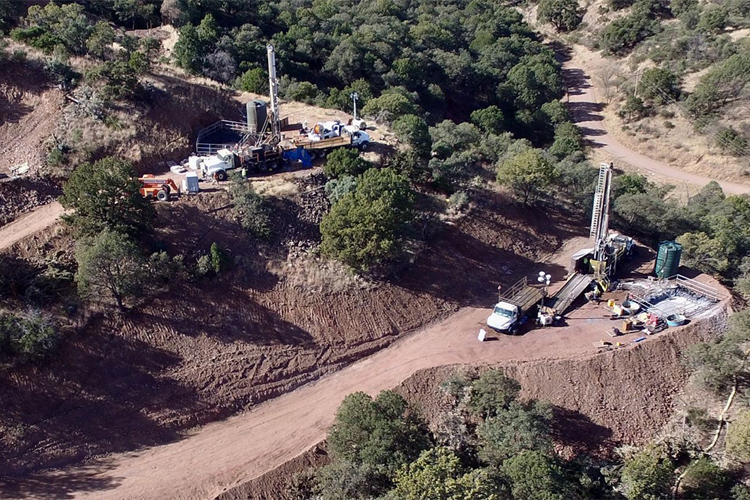Global mining company South32 Ltd. is planning a state-of-the-art mine in Santa Cruz County that would uptick economies in the depressed region for decades to come.
Called the Hermosa Project, it is projected to be one of the top four zinc producing mines in the world, said Greg Lucero, vice president of corporate affairs for the project.
“This project will be the centerpiece for South32 and it will have a huge economic impact in Patagonia, Southern Arizona and the state overall,” Lucero said.
Over the lifetime of the project, the underground mine would generate thousands of direct and indirect jobs, including high paying jobs for students coming out of local schools in Nogales. The project is projected to contribute more than $21.6 billion to the state’s GDP, according to an economic impact study out of Arizona State University.
Zero emissions goal
Lucero said Hermosa will be the “mine of the future,” with the latest technology including autonomous and remote control vehicles. The company-wide goal is to create net-zero emissions by 2050. Hermosa would be the flagship project to attain that goal.
“We’re looking at reducing our carbon footprint on the site so everything we’re looking at right now is being designed to create the mine of the future,” he said.
South32, headquartered in Perth, Australia, acquired the previous owner of the site, Arizona Mining Inc., for $1.3 billion last year. This is South32’s first venture in North America. South32 is also hunting for new projects on both sides of the border, Lucero said.
Economic engine for Santa Cruz, Pima, Cochise counties
Over the past year, the company has spent millions of dollars cleaning up previously unlined stacks of tailings from the historic mining area. Now, it is completing the exploration phase and preparing to enter the design phase.
A report issued last month shows promising results for the Taylor Deposit on the site, indicating millions of tons of zinc, lead and silver below. If all goes smoothly, construction would begin in 2022 or 2023, Lucero said.
High paying jobs for both sides of the border
Currently, there are about 250 people employed at the site. That number is projected to grow over the next two years to about 2,500 when construction would be at its peak. Once in operation, it would employ about 550 people, Lucero said. For every direct job the mine creates, seven more indirect jobs will be created, a company feasibility study shows.
Lucero, who also is a member of the Nogales Unified School District governing board, said Nogales High School has high graduation rates but few options for jobs for students who are close to 100 percent minority and economically disadvantaged.
South32 plans to work with local schools including Pima JTED Career and Technical Education District to train and recruit future employees, Lucero said.
Border proximity key
Proximity to the Arizona-Mexico border is one reason South32 was interested in the project, company officials said. The mine is about 15 miles northeast of Nogales and the Nogales Port of Entry.
The project will transport smelter to the Port of Guaymas where it will be shipped across the world. Company officials are working with Sonoran officials to find adequate travel corridors. The capacity at the port also would need to be expanded, which would create more jobs south of the border.
Economic impact study
Hermosa stands to be the first major mining operation in Santa Cruz County in decades.
According to an economic impact report last year by the L. William Seidman Research Institute and the W.P. Carey School of Business at Arizona State University, the project would benefit Santa Cruz, Pima, and Cochise counties, and Arizona as a whole.
According to the study, the project would:
• Generate an average annual increase of $676.1 million per year to the state’s GDP during the life of the project
• Employ 451 to 525 employees once it is in production
• Support an average of 3,225 other jobs for Arizona residents, most in private non-farm sectors
• Provide an annual average of $266.6 million in additional disposable income to Arizona residents through wages and salaries
• Generate an average $26.9 million per year in revenues for state government
This story was originally published at Chamber Business News.




